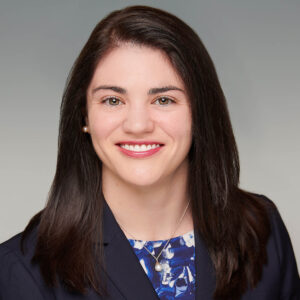Pittsburgh, PA and Washington, DC
PIOGA Press
(by Gary Steinbauer and Gina Buchman)
On May 31, 2025, the Pennsylvania Department of Environmental Protection (PADEP) published notice of opportunity for public comment on its Proposed State Plan for 40 CFR Part 60, Subpart OOOOc Emissions Guidelines for Greenhouse Gas Emissions from Existing Crude Oil and Natural Gas Facilities in the Pennsylvania Bulletin. 55 Pa.B. 3810.
PADEP is obligated to undertake this rulemaking pursuant to section 111(d) of the Clean Air Act and its implementing regulations, which require states to establish, implement, and enforce standards of performance for existing sources of a pollutant for which emission guidelines have been issued by the United States Environmental Protection Agency (EPA). In March 2024, EPA published Standards of Performance for New, Reconstructed, and Modified Sources and Emissions Guidelines for Existing Sources: Oil and Natural Gas Sector Climate Review. 89 Fed. Reg. 16820 (Mar. 8, 2024). This rule, referred to by some as the “Methane Rule,” established new New Source Performance Standards regulating greenhouse gases (GHGs) and volatile organic compounds (VOCs) emissions for the Crude Oil and Natural Gas source category that begin construction, reconstruction, or modification after December 6, 2022 (referred to as OOOOb) and emission guidelines for states to use in developing, submitting, and implementing state plans to establish standards of performance to limit GHG emissions (in the form of methane) from sources existing as of December 6, 2022 in the Crude Oil and Natural Gas source category (referred to as OOOOc). OOOOb and OOOOc are very similar as it relates to methane reduction. States, industry trade groups, and oil and gas companies have challenged the Methane Rule, and these challenges are pending before the D.C. Circuit Court of Appeals.
States can either adopt EPA’s model emission guidelines as their state plan or develop their own standards that are equally as or more stringent than the federal model rule. States may apply standards less stringent than those included in OOOOc by taking into consideration the remaining useful life (RULOF) of the regulated facilities, or classes of regulated facilities in their plans. The state must demonstrate to EPA that each such facility (or class of such facilities) cannot reasonably achieve the degree of emission limitation in the model rule due to (1) unreasonable cost of control resulting from plant age, location, or basic process design; (2) physical impossibility or technical infeasibility of installing necessary control equipment; or (3) other circumstances specific to the facility. 40 C.F.R. § 60.24a(e).
The state must also demonstrate that there are fundamental differences between the information specific to these facilities (or class of such facilities) and the information EPA considered in determining the degree of emission limitation achievable in the model emission guidelines. Id. If the state has made the required demonstration, it may apply a less stringent standard of performance, but it must be no less stringent than necessary to address the fundamental differences identified and set a standard of performance in the form required by the applicable emission guideline. 40 C.F.R. § 60.24a(f). If the state applies less stringent standards based on an operating condition(s) within the designated facility’s control, such as remaining useful life or restricted capacity, the state’s plan must also include requirements for the implementation and enforcement of such operating condition(s), such as requirements for monitoring, reporting, and recordkeeping. 40 C.F.R. § 60.24a(g).
EPA promulgated regulations outlining the specific process for RULOF demonstrations in 2023 to give states greater clarity on and predictability for applying less stringent standards of performance consistent with CAA Section 111. 88 Fed. Reg. 80,480. In the preamble to that 2023 final rule, EPA acknowledged that the OOOOc emissions guidelines “address large, complex, and highly diverse source category[y].” 88 Fed. Reg. at 80, 512. As such, EPA suggested that RULOF may play a more significant role in state plans for OOOOc. Id.
PADEP has chosen to adopt EPA’s model OOOOc emissions guidelines as its Proposed State Plan, while also seeking comments on whether RULOF should be considered in establishing a standard of performance in its State Plan “for any facility or class of facilities that would be regulated.” Operators that believe that they own and operate oil and natural gas facilities that should be subject to differing standards under a RULOF analysis, should consider providing as much information as possible to PADEP in the public comment period regarding unreasonable costs of control resulting from facility age, location, and design, infeasibility of installing equipment, and other specific details that would be relevant to such analysis.
In the Proposed State Plan, PADEP explains that it believes OOOOc, as part of the New Source Performance Standards, to be adopted by reference under 25 Pa. Code §122.3 and the Department has the statutory and regulatory authority to adopt the OOOOc performance standards through its federally enforceable plan approval, state operating permits, Title V permit programs, or general permits. The Department intends to develop General Plan Approval(s)/Operating Permit(s) that would incorporate the OOOOc model rule and the compliance, monitoring, recordkeeping, and reporting requirements required by federal regulation. PADEP says that it intends to collaborate with industry in developing these permits and will provide opportunity for public comment. What is not clear, however, is whether there will be additional opportunity for public comment regarding the State Plan that is submitted to EPA regarding its findings on RULOF.
A copy of the Proposed State Plan is available on the DEP eLibrary. The Proposed State Plan is 193 pages and includes various appendices. The Department will accept written comments on the proposed plan for a 60-day comment period, which closes on July 30, 2025. In addition, the Department is holding seven public hearings on its proposal in June and July, where the public can provide comments on the proposal. Further information regarding these hearings and registration can be found on the Department’s website.
As of the date of this article, PADEP must submit its state plan to EPA by March 9, 2026, with compliance deadlines in 2029. However, less than one week after the Department opened its Proposed State Plan for comment, the federal Office of Management and Budget received what it describes as the EPA’s interim final rule to extend deadlines in OOOOb and OOOOc. In the past, EPA has issued interim final rules for rules related to the Agency’s organization, procedure, or practice. These interim final rules typically become effective upon publication in the Federal Register or 30 days after publication and provide a relatively short period for submission of public comments. EPA has followed prior interim final rules with a final rule that considers and responds to comments submitted on the interim rule. Although EPA’s interim final rule that is undergoing review by OMB has not been released to the public, it may extend the current March 9, 2026, deadline for the Department to submit the Proposed State Plan to EPA under 40 C.F.R. § 60.5362c.
Babst Calland’s Environmental Practice Group is closely tracking PADEP’s Proposed State Plan and EPA’s pending interim final rule, and our attorneys are available to provide strategic advice on how these actions may affect the oil and gas industry in Pennsylvania and can assist with drafting and submitting comments on PADEP’s proposal. For more information or answers to questions, please contact Gary Steinbauer at (412) 394-6590 or gsteinbauer@babstcalland.com or Gina Buchman at (202) 853-3483 or gbuchman@babstcalland.com.
To view the full article, click here.
Reprinted with permission from the July 2025 issue of The PIOGA Press. All rights reserved.


